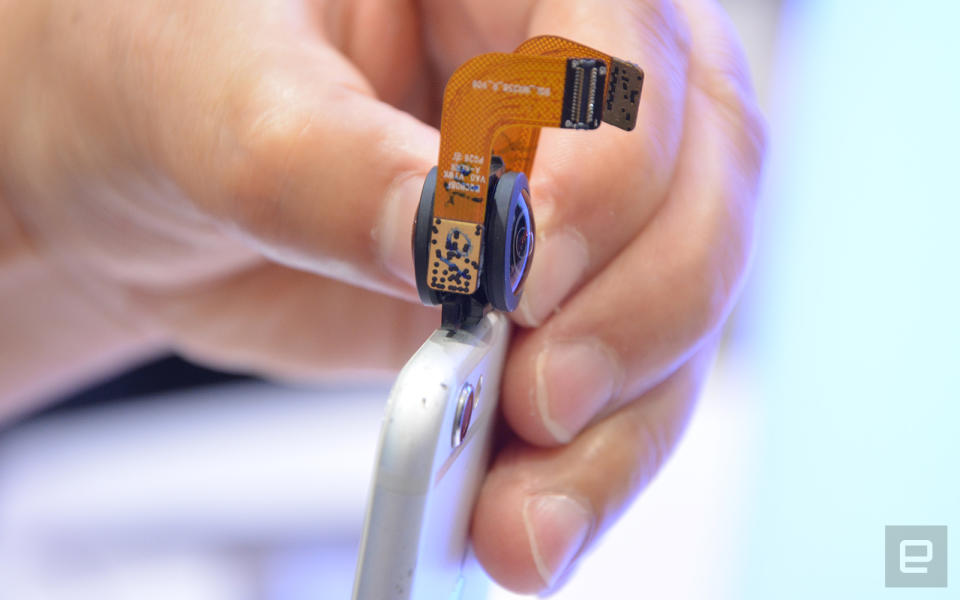Meet the small 360 camera module that will fit into phones
Smartphones with an integrated 360 camera won't look as awkward as they do now.
You're probably not aware of this, but a Chinese company dubbed ProTruly has already released the world's first two "VR smartphones" with a built-in 360 camera last December. Don't worry if you missed the news, because chances are you'd be put off by the devices' sheer bulkiness, but according to Wuhan-based HT Optical, this may no longer be the case with the next release. At MWC Shanghai, I came across this company which appeared to be the 360 camera module supplier of ProTruly, as suggested by the presence of its two phones at the booth. The phones' brands were actually covered with tape, but given their distinct designs, the link between HT Optical and ProTruly was hardly a secret.
As I was mocking the ridiculousness of the ProTruly "Darling" phones on the counter, HT Optical's Vice President Shu Junfeng pulled me to a side and gave me a sneak peek at what's coming next: a much smaller 360 camera module that can fit into a 7.6mm-thick smartphone, yet it'll take 16-megapixel stills -- a massive jump from, say, the Insta360 Air dongle's 4.5-megapixel resolution, and also a tad more than the latest Samsung Gear 360's 15-megapixel offering.

Future "VR smartphones" will look much less ridiculous than this ProTruly Darling.
I wasn't sure whether it was excitement or skepticism that my face expressed upon hearing this claim, but it prompted Shu to show me some photos -- which he wasn't able to share for this article -- of an upcoming smartphone that will feature this new module. Indeed, the device looked more like a conventional smartphone, as opposed to the 8.9mm-thick and 181.4mm-tall ProTruly Darling pictured above (and just for reference, the iPhone 7 Plus is 7.3mm thick and 158.2mm tall).
Also, the lenses on this mysterious phone's module apparently add just an extra 1mm to the overall thickness, which means the camera will be less of an annoyance during phone calls or when placed in our pockets. This still doesn't stop either lens from touching whatever surface you place the phone on, but Shu assured me that these lenses will feature a tough scratch-resistant coating.
Shu then showed me what he claimed to be a 16-megapixel 360 still taken with that new camera module, and the image was surprisingly sharp for such a tiny module. Needless to say, I was able to zoom into that image much further than I would with the photos from my Insta360 Air. While there was no sample video to show me, the exec said this little module can shoot 4K videos which is also impressive. I guess we'll see more when this phone launches in China on July 30th.

As a firm that used to deal with camera makers like Sony and Olympus, HT Optical has dabbled with other kinds of product categories following the decline of the compact digital camera market. On top of the smartphone VR camera, I was also intrigued by the company's phone cases with integrated optical zoom camera. The one highlighted above comes with 5x optical zoom, for instance, and it has its own microSD slot. It's a similar idea to the Hasselblad MotoMod for Moto Z series, except you can plug any iPhone or Android phone -- depending on the plug type -- into this one. As a bonus, thanks to their built-in battery, the cases can capture images by themselves when needed, so long as you're comfortable with the lack of a viewfinder.
It's hard to tell whether this type of phone case will ever take off, but for the smartphone VR camera module, Shu reckoned it'll take at least a year or two before it becomes a mainstream feature. For now, he's happy to focus on working with the smaller mobile brands that tend to be more daring.













